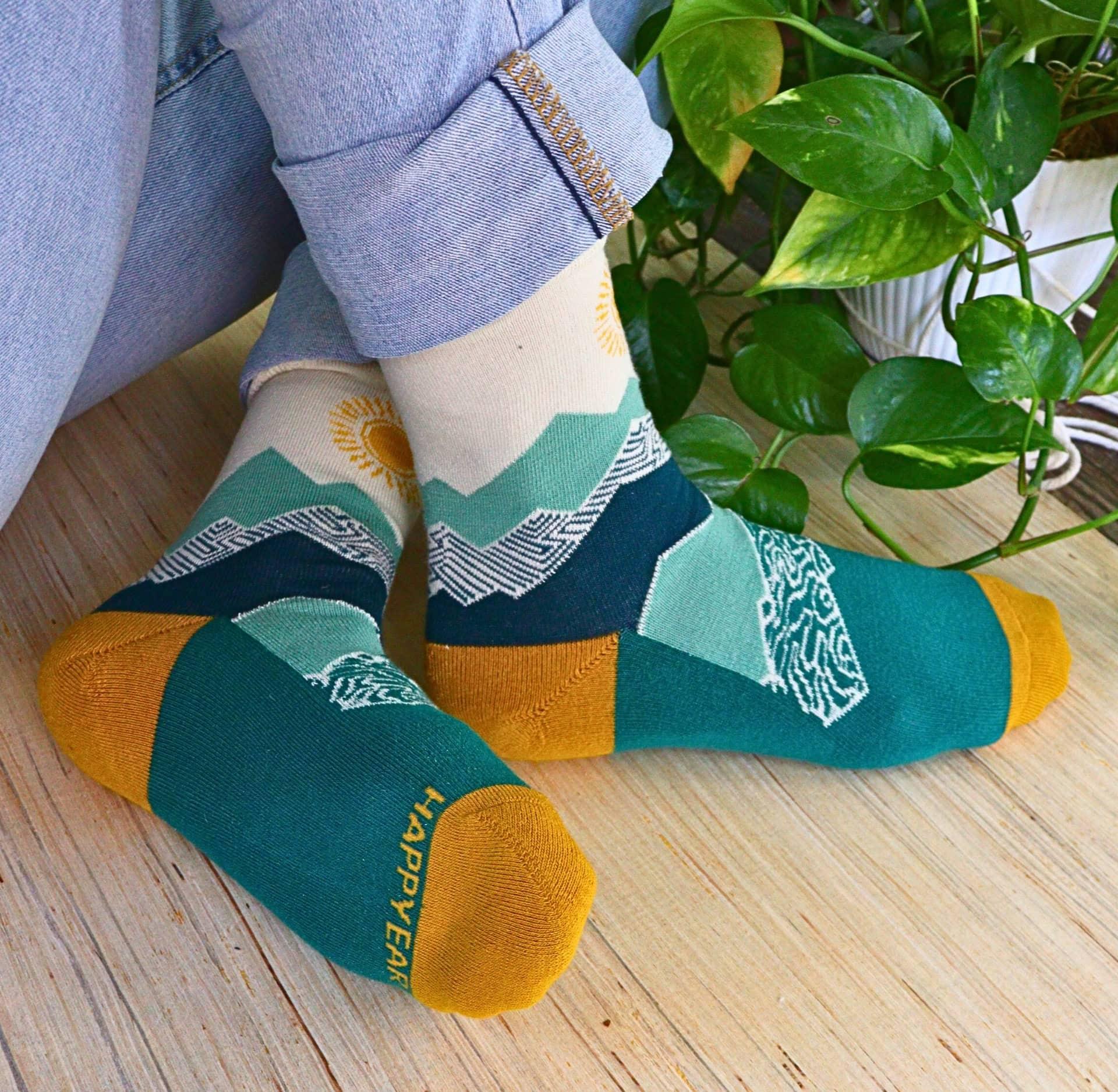In an age where environmental consciousness is progressively shaping our everyday choices, the humble sock emerges as an unlikely hero in the battle against microplastic pollution. Though frequently enough overlooked, the textiles we adorn our feet with can have a critically important impact on our planet’s health. As we shuffle through life, the fibers shed by our clothing creep into waterways and ecosystems, contributing to a growing crisis of microplastics that are now found in every corner of the globe.In response to this pressing issue, a new wave of innovation is emerging: sustainable socks designed to minimize environmental harm while keeping our toes cozy. This article delves into the journey of sustainable socks—how they’re crafted, their role in reducing microplastic pollution, and the choices we can make to ensure that each step we take is one towards a greener future. Join us as we explore the path to sustainability, one sock at a time.
Exploring the Microplastic Crisis and Its impact on Our Oceans
The prevalence of microplastics in our oceans has reached alarming levels, threatening marine life and ecosystems. These tiny particles, often less than 5mm in size, originate from various sources including broken down plastic waste, synthetic fibers from clothing, and even personal care products. As they accumulate in the ocean, microplastics pose serious hazards to marine organisms, leading to ingestion, entanglement, and even disruption of biological processes. To combat this crisis, a shift towards sustainable consumer choices is crucial.
One impactful step individuals can take is opting for sustainable sock brands that prioritize eco-friendly materials. By choosing socks made from natural fibers, such as organic cotton or recycled materials, consumers can substantially reduce the release of microplastics into waterways. Consider the following benefits of switching to sustainable socks:
- less Microfiber Shedding: Natural fibers shed fewer microplastics compared to conventional synthetic fabrics.
- Eco-Friendly Production: Sustainable brands frequently enough utilize environmentally responsible practices.
- Durability: High-quality materials lead to longer-lasting products, resulting in less waste.
| Material | Microplastic Release | Eco-Friendliness |
|---|---|---|
| Synthetic Fibers | High | Low |
| Organic Cotton | Low | High |
| Recycled Polyester | Medium | Medium |

Sustainable Sock Materials: A Guide to Eco-Friendly Fabrics
When selecting socks that prioritize sustainability, it’s essential to consider the materials that minimize environmental impact while maximizing comfort. Organic cotton stands out as a preferred option; its cultivation avoids harmful pesticides and reduces water usage. Furthermore,bamboo fiber has gained popularity for its natural antibacterial properties and renewable growth cycle. This fast-growing grass not only provides a soft feel against the skin but also flourishes without artificial fertilizers. Other materials worth exploring include:
- Recycled polyester: Made from post-consumer plastic bottles, it helps in reducing waste.
- Tencel: A fiber derived from sustainably sourced wood pulp, it’s both biodegradable and incredibly soft.
- Hemp: Known for its durability and low environmental impact, it requires minimal water and no pesticides.
Each of these fabrics offers an eco-friendly choice to traditional sock materials, significantly reducing the release of microplastics into our waterways. When incorporating these sustainable choices into your wardrobe, consider the lifecycle of the materials. Below is a comparison table detailing some eco-friendly sock materials and their benefits:
| Material | Benefits | Environmental Impact |
|---|---|---|
| Organic Cotton | Soft, breathable | Less water usage, no pesticides |
| Bamboo Fiber | Antibacterial, moisture-wicking | Fast-growing and renewable |
| Recycled Polyester | Durable, lightweight | Reduces plastic waste |
| Tencel | Soft, biodegradable | Sustainably sourced |
| Hemp | Durable, breathable | Low water use, no pesticides |

Conscious Consumption: Choosing brands that Make a Difference
As consumers become more aware of the environmental impacts of their choices, the demand for products that align with ethical values is surging. The footwear industry, though frequently enough overlooked, is a significant contributor to plastic pollution, notably through synthetic fabrics that release microplastics into our water systems. by opting for brands that prioritize sustainable materials, like organic cotton or recycled fibers, you are not just making a fashion statement, but actively participating in a movement towards cleaner oceans and healthier ecosystems.choosing socks made from biodegradable or recycled content can radically reduce the amount of plastic waste generated with each purchase.
When selecting which brands to support, consider their overall production processes and clarity. Look for companies that embrace eco-friendly practices and commit to reducing their carbon footprint. Sustainable brands frequently enough share their journey, from sourcing materials to manufacturing processes, ensuring accountability and fostering consumer trust. Hear are some key elements to evaluate when considering a brand’s impact:
- Transparency: Brands that openly communicate their practices and certifications.
- Material Sourcing: How are the raw materials sourced? Are they organic, recycled, or biodegradable?
- Production Methods: Are the manufacturing processes energy-efficient and waste-reducing?
- Fair Labor Practices: Do they ensure fair wages and safe working conditions?
Choosing socks that minimize harm to the environment not only benefits our planet but also sets a precedent for other industries to follow. As a community of conscious consumers, aligning our spending with our values can lead to meaningful changes.Each step in sustainable footwear can contribute towards a significant reduction in microplastic pollution, illustrating that even the smallest choices can lead to a larger impact. Together, we can weave a tapestry of change, one sock at a time.

Caring for Sustainable Socks: Tips to Maximize Longevity and Minimize Waste
To maximize the lifespan of your sustainable socks and contribute to a healthier planet, it’s essential to adopt mindful care habits. Start by washing your socks in cold water to preserve the fabric integrity and reduce energy consumption. When possible, opt for gentle cycles to minimize friction, which can lead to microplastic shedding.It’s also advisable to use a mesh laundry bag to prevent your socks from getting snagged or stretched out during the wash.
in addition to proper washing techniques, consider these simple tips to further enhance your sock care routine:
- Air dry instead of using a dryer, as heat can damage the fibers.
- Avoid bleach and fabric softeners, which can degrade materials over time.
- Turn your socks inside out before washing to reduce abrasions on the outer surface.
- Store socks in a cool, dry place to prevent moisture and odors.
By integrating these practices into your routine, you not only prolong the life of your socks but also play a part in mitigating microplastic pollution with each wear.
Wrapping Up
As we take conscious strides toward a more sustainable future, the humble sock emerges as an unlikely hero in the battle against microplastic pollution. By making informed choices about the materials we wear, we can significantly reduce our environmental impact, one step at a time. Every pair of sustainable socks represents a commitment to greener practices, a gentle reminder that even the smallest actions contribute to a larger movement.
As you slide your feet into your next pair, remember that each tread is more than just a routine; it’s a step towards cleaner oceans and a healthier planet. Let us continue to embrace innovation, support eco-friendly brands, and inspire those around us to think critically about their choices. Together, we can weave a fabric of sustainability that extends beyond our feet and into the world we inhabit, proving that every step truly matters.